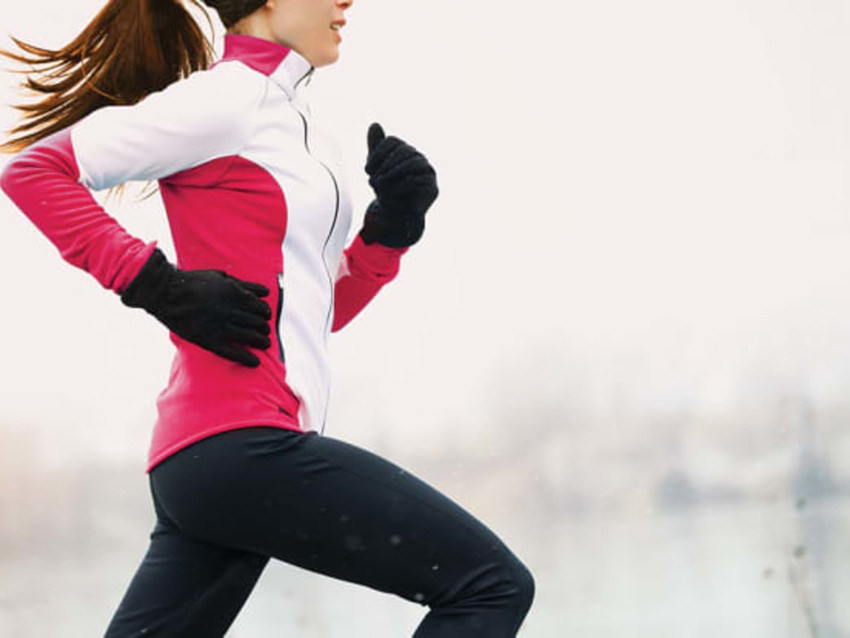Busted: Cold Weather vs. Hot Weather Training
Posted by Toby on Mar 16th 2020
When it comes to exercise, will extreme temperatures give you an edge?
First there was hot yoga, with proponents swearing by the purifying, energy-boosting effects of the heat. Now there are cold-temperature studios that claim that a chilly environment is the perfect way to boost calorie burn.
Hot or cold, indoors or out, one thing is for certain: When it comes to exercise, people love to go to the extreme. But how truthful are these calorie-blasting claims, and are the benefits of being so radical really worth sweating/freezing your a— off?

Claim: Extreme heat gives you a better workout
Verdict: False.
Your heart rate may run higher in warmer temperatures, but if the workout intensity is the same, your oxygen consumption — and therefore your calorie burn — will remain the same, according to the Journal of Exercise Science & Fitness. “For every liter of oxygen consumed, you burn 5 calories, regardless of your heart rate,” says Michele Olson, Ph.D., professor of exercise science at Auburn University in Montgomery, Alabama. Simply put, if you increase your intensity, you’ll boost your burn, no matter what the temperature.
Furthermore, in extreme heat, an elevated heart rate is not always a good thing. “You lose more blood plasma from sweating, meaning you have less blood to go around,” Olson adds. “Your heart rate is forced to increase to distribute it properly.” This result is simply dehydration and has to do with blood volume, not exertion, and does not directly affect your calorie burn.
Claim: Heat improves exercise performance
Verdict: True.
But only if you’re used to it. Over time, as you acclimate to a higher temperature, your blood plasma volume increases. “That means that in hot weather, you’ll have more blood going to your heart and more blood going to your skin to cool itself,” says Douglas Casa, Ph.D., kinesiology professor at the University of Connecticut and the chief executive officer of the university’s Korey Stringer Institute. But this does not mean that you can take hot yoga twice a week and be acclimated to 100-degree temps. It takes about seven to 10 days of continual exposure for acclimatization to take hold, according to Casa, so to take advantage of this adaptation, spend some time beforehand training in the conditions you expect to experience during your event.
Claim: Sweating outside on a cold day makes you sick
Verdict: False.
Exercise generates a considerable amount of heat and can cause you to sweat even when it’s cold outside. As the sweat dries, you might feel chilled, but it does not mean you’re sick. “The incidence of colds rises during the fall and winter seasons, which is why people assume the temperature and wetness from sweating influences the increased susceptibility to a cold,” Olson says. However, temperature does not make you sick — viruses make you sick — and the cold virus spreads when people are in close contact indoors for months on end, regardless of what the thermostat says or how much you sweat and where. So don’t be scared to sweat in the winter, and by all means, maintain your workout intensity — just dress more appropriately for the season. Layer your workout clothing so that your innermost layer is a moisture-wicking, synthetic fabric. Top that with a fleece jacket or shirt to hold in the warmth, then finally a wind- resistant/waterproof outer shell to protect you from the elements.
Claim: You burn more calories training in cold temps
Verdict: True.
Research has shown that repeated exposure to cold temperatures can actually change the structure of mito-chondria and can help convert inert white fat cells to calorie-burning beige fat cells. “Therefore, we know that fat tissues can become more metabolically active under cold conditions,” Olson explains. Furthermore, exercising in cooler temps can result in a calorie-burning boost as your body reacts to the cold by burning fat as fuel to stay warm.
Take advantage of this adaptation and train outside in the cold, or dial down the thermostat when exercising indoors like they do at Brrrn, a boutique studio in New York City: For its yoga, mobility and strength classes, the temp hovers around 60 degrees, the cardio classes dip down to 55 degrees and the high-intensity interval training classes chill off at 45 degrees.
Claim: Joint pain is exacerbated by cold weather
Verdict: False.
Some joint pain can be blamed on a drop in barometric pressure, which causes tissues in joints to swell and press against nerves. However, there is no evidence that the cold itself is at all culpable. “There is no cause and effect between cold weather and joint pain,” Casa says. Any joint or ligament will feel stiff and immobile when it’s cold, no matter if you’re training inside or out. Prevent possible aches and pains by doing a longer warm-up — up to twice as long as normal — before exercising in the cold. Getting the blood flowing to these creaky areas for a longer duration will help grease your wheels.
Written by OxygenMag for Oxygen Magazine and legally licensed through the Matcha publisher network. Please direct all licensing questions to legal@getmatcha.com.

